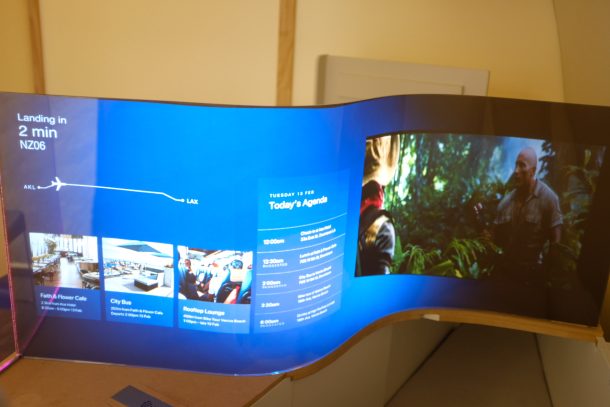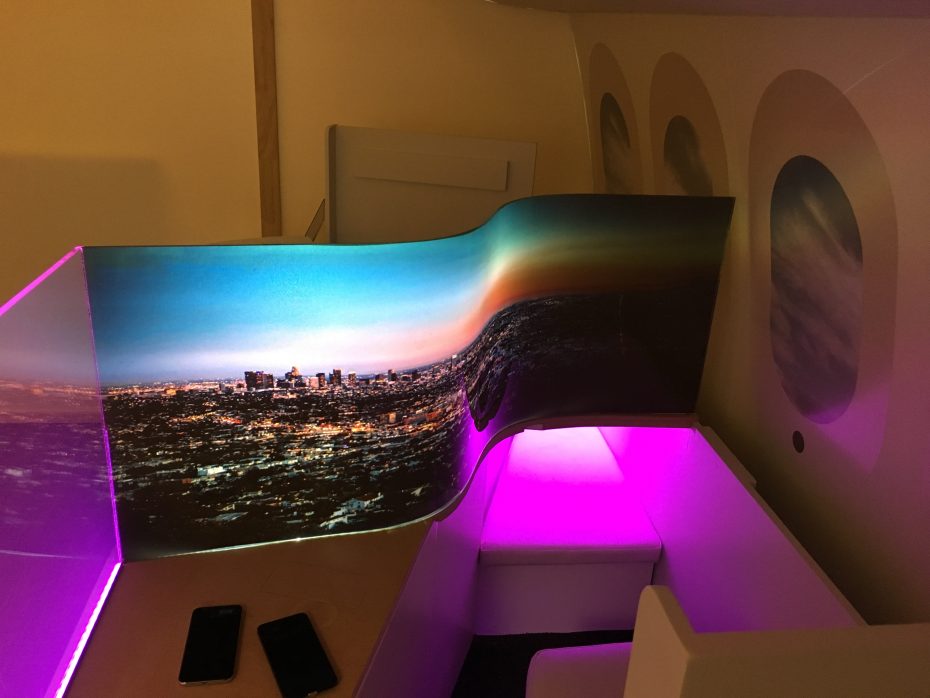With the impending arrival of some new 787s and A321 neos Air New Zealand started looking at what the next generation of cabin might look like. Everything was up for rediscovery and redesign, but my job was to look at how digital devices will play a part in the cabin experience in the near future.
One of the Business Class seat concepts was a new offset twin-pod configuration where two customers sat facing each other but with a curved s-shaped privacy screen between them. We wondered “what if that privacy screen was actually all screen?”. Using a flexible micro-led display and some eye tracking opened the door to some really exciting possibilities. No longer constrained to a flat screen we could play with the surface and either use the curve or pretend it didn’t exist through some clever mapping and morphing – such that a movie could fill part of the screen and appear to continue into the adjacent passengers space through some real time re-mapping of the movie according to the head position of the viewer.

^ In this example the classic Jumanji is rendering the left side of the movie on an oblique part of the screen coming toward the viewer, but the system redraws it such that it appears on a flat surface. Other parts of the same surface are providing live flight information, meal ordering and itinerary planning. The ambient pod lighting also responds to the viewer and in this image has dimmed for the movie.
Another big part of this concept is the idea that passengers now expect to be able to bring their own device with their own media or streaming service already installed and for these travellers the best thing we could offer with this huge immersive surface is the ability to airplay or cast their own content to the screen. The ability to airplay to an IFE still doesn’t exist on any airline currently flying (although Apple have started licensing the technology to various TV manufacturers so it is surely only a matter of time). But for this prototype we reverse engineered the AirPlay protocol for movies and integrated it directly into the IFE – and you really could cast your own content from your own device onto the screen.
Going further, there were some really exciting ideas about how a couple travelling together but forced to sit separately could be reunited through the s-shaped screen. Combine the eye tracking with a camera capturing the passenger and projecting that onto the screen it could appear to both passengers as though their partner is actually sitting directly opposite them. Ultimately by modelling the geometry of the screen in unity and rendering everything through the unity engine with a camera within the unity environment moving in real time according to the head position of the viewer the possibilities of what we could do with this screen were almost limitless.

Leave a reply